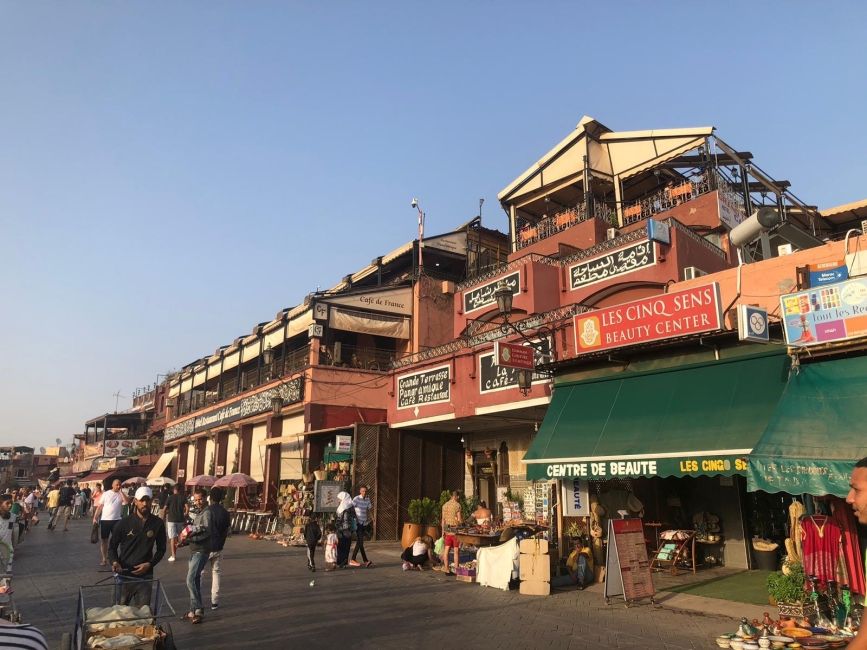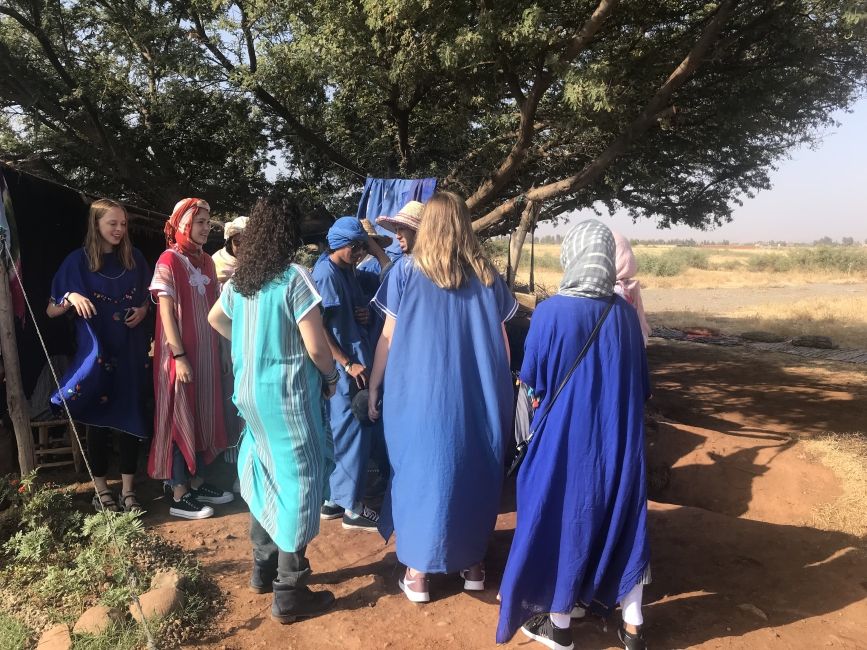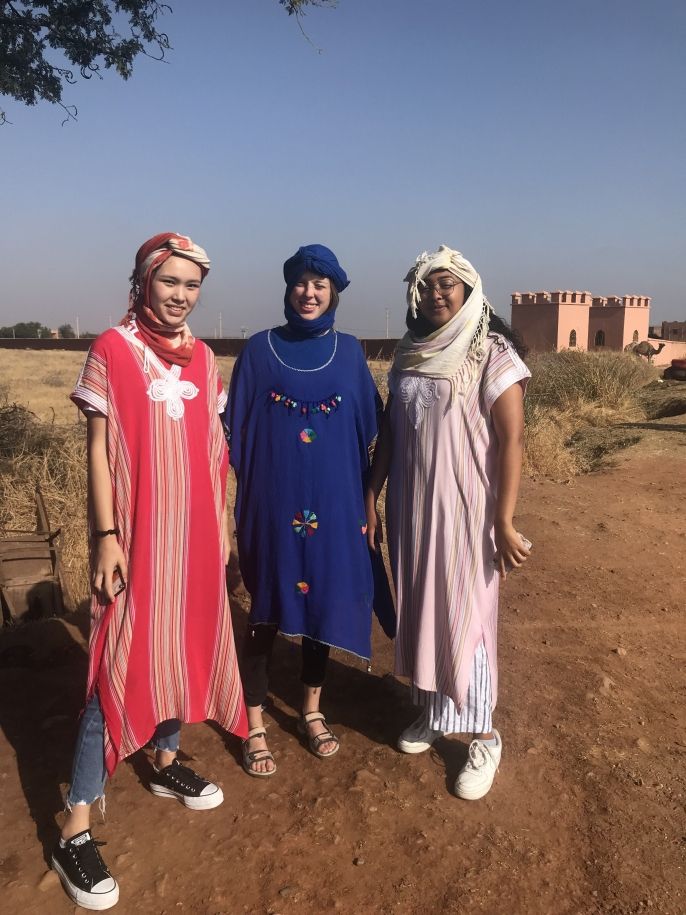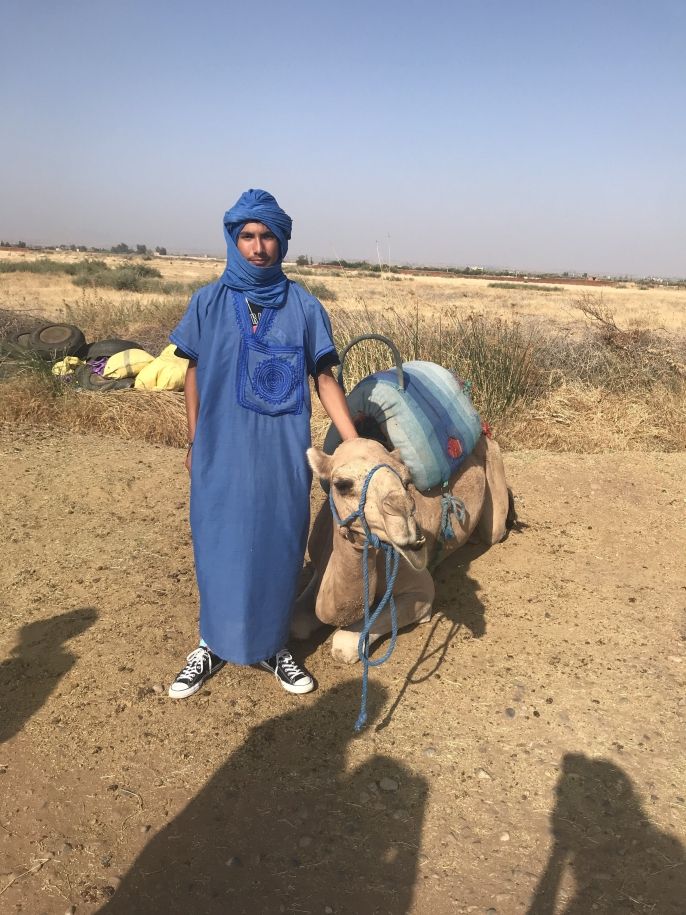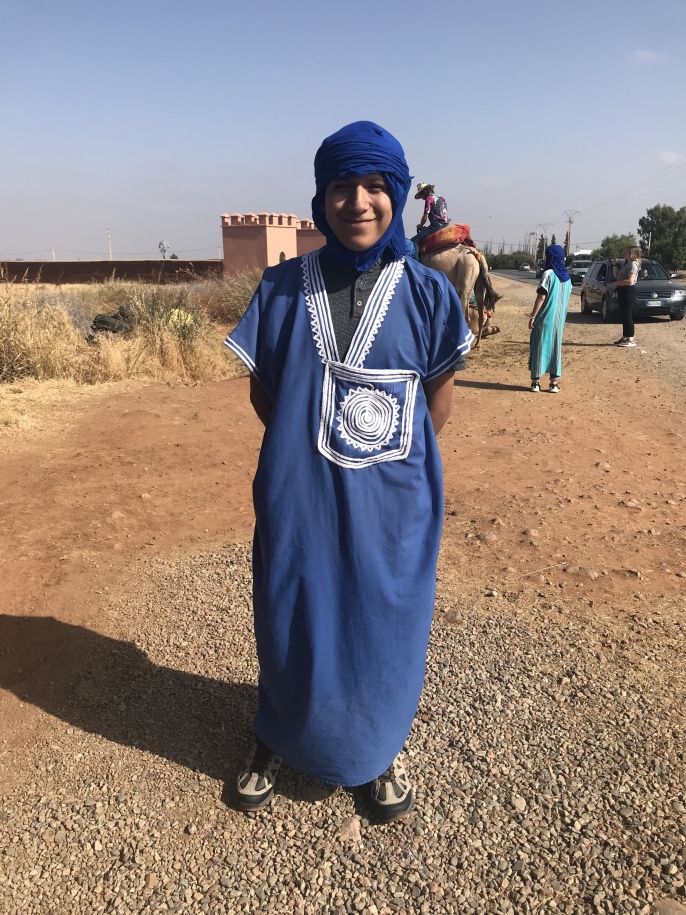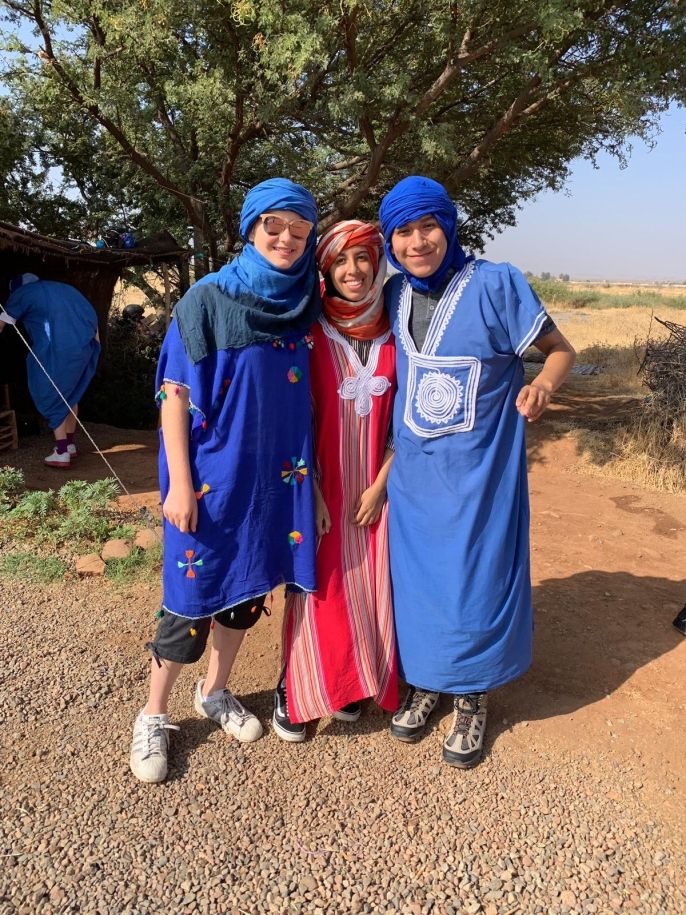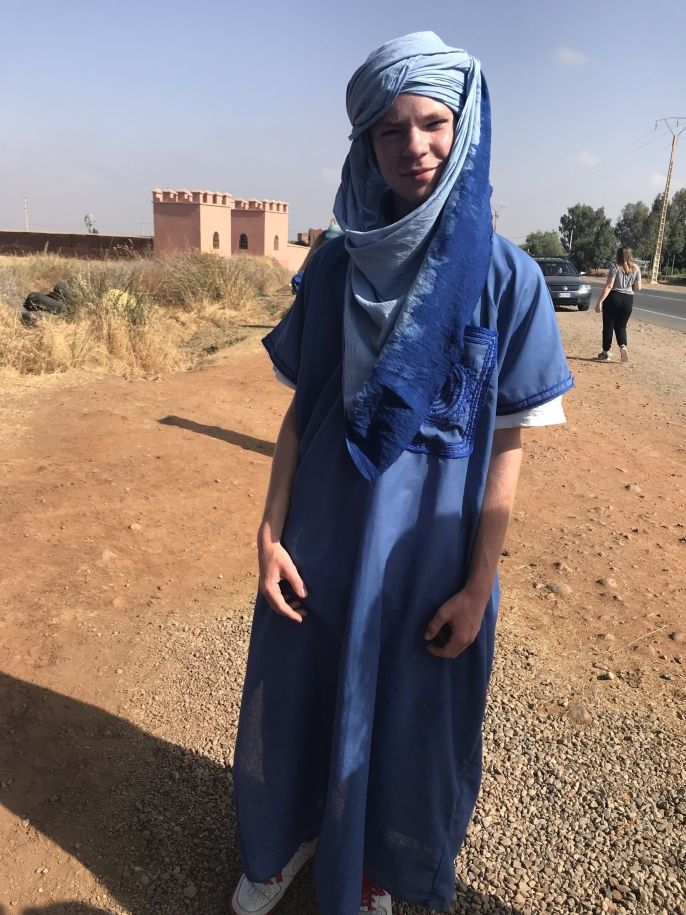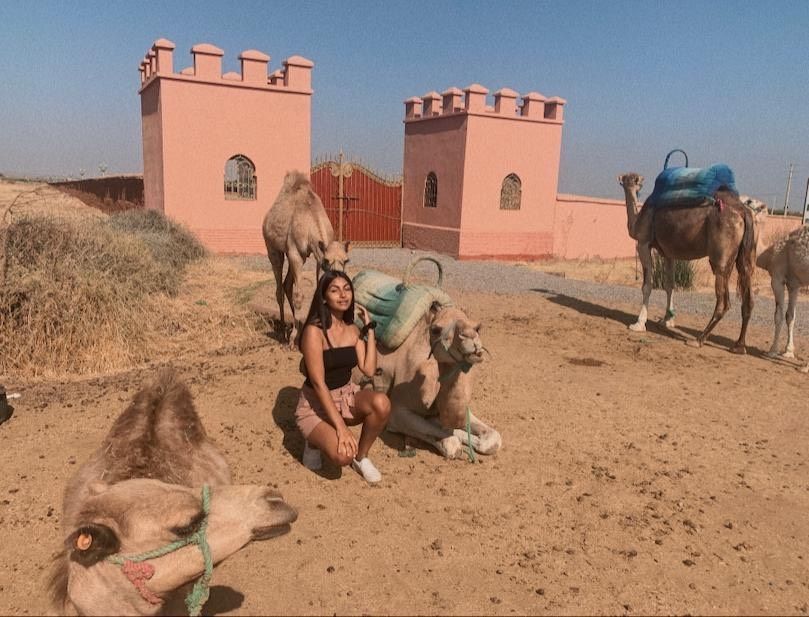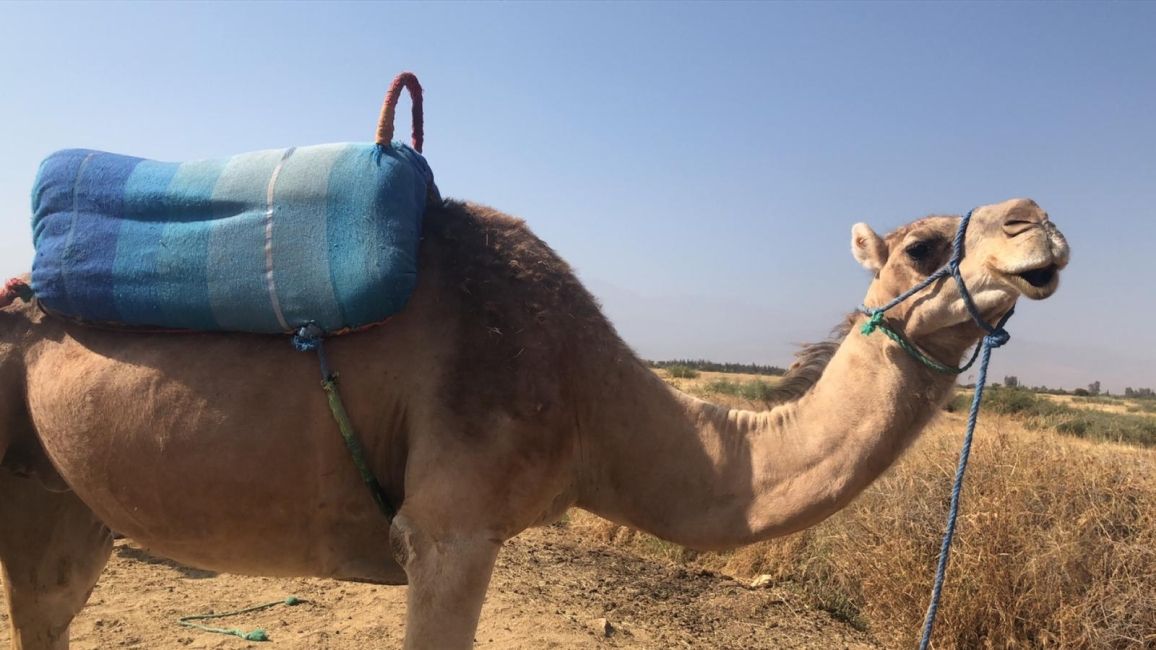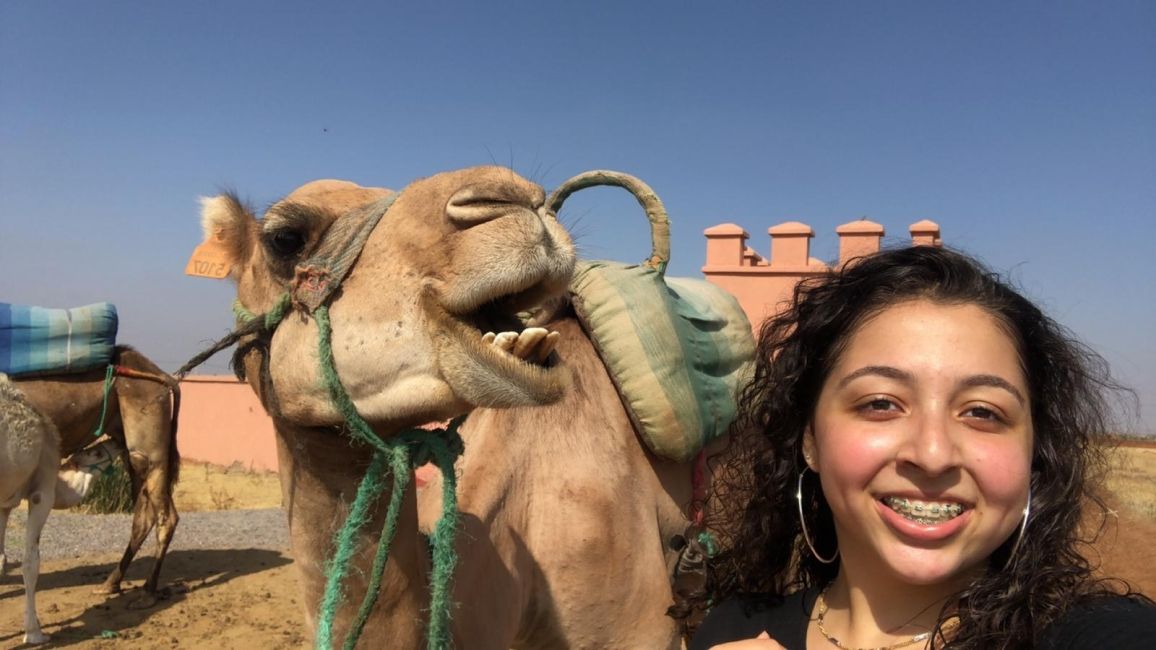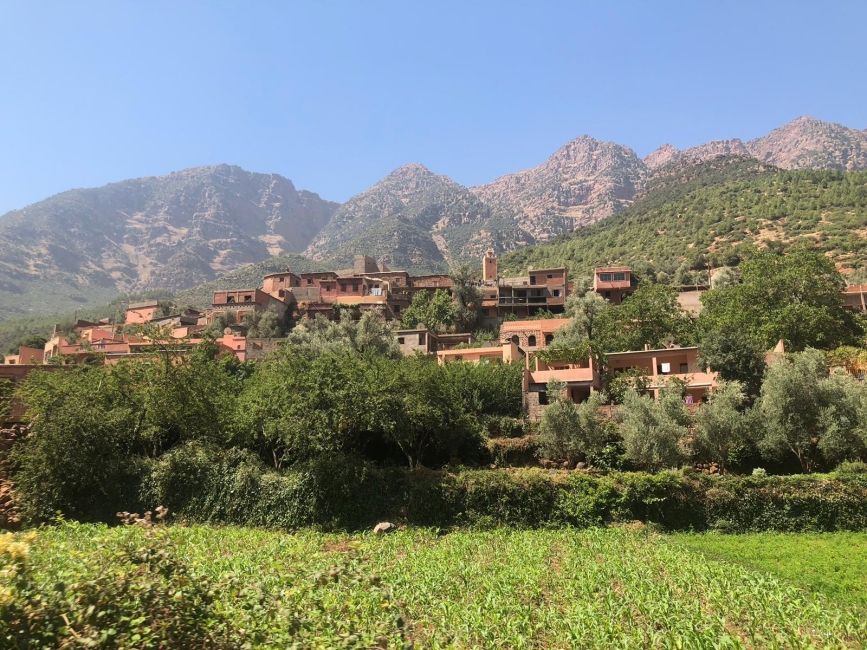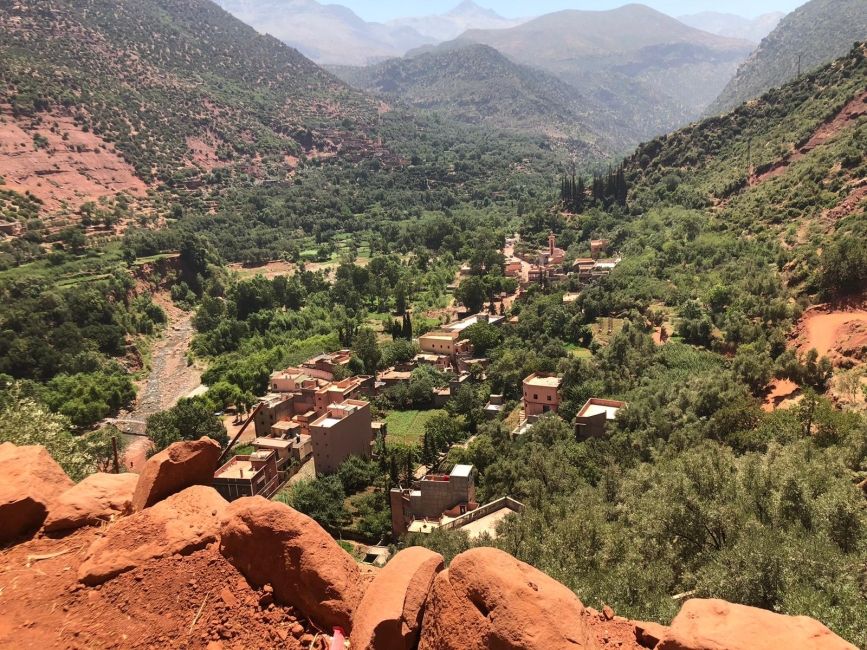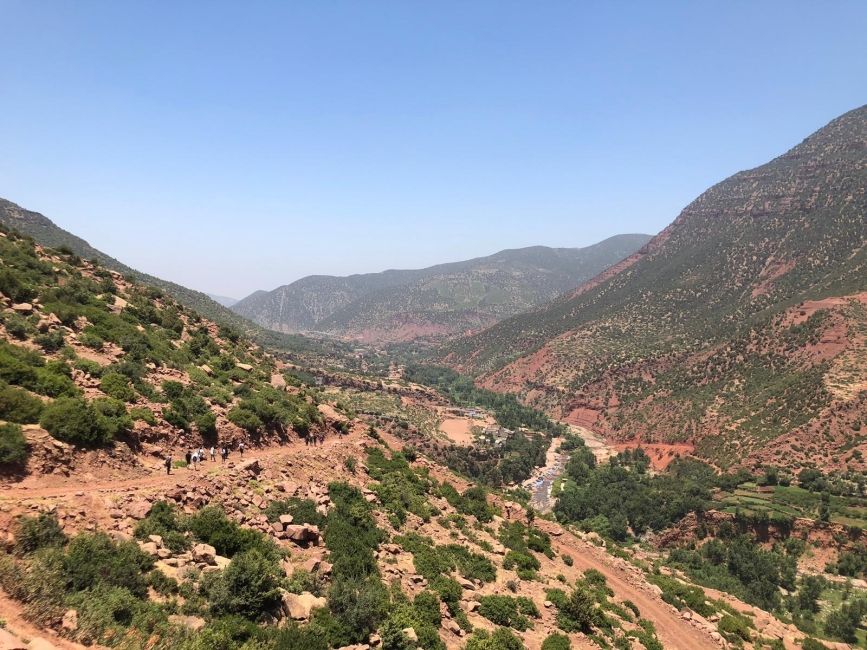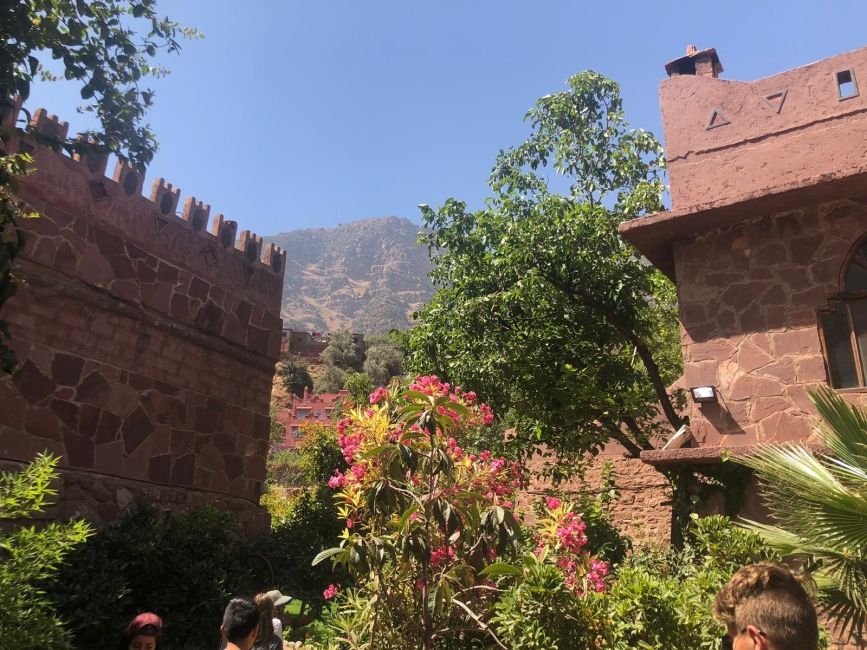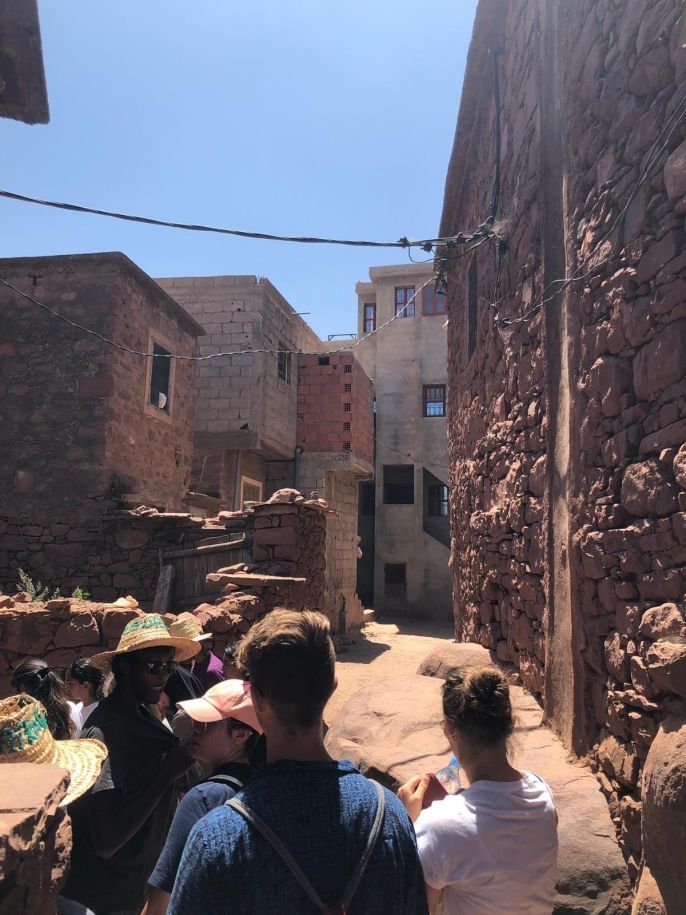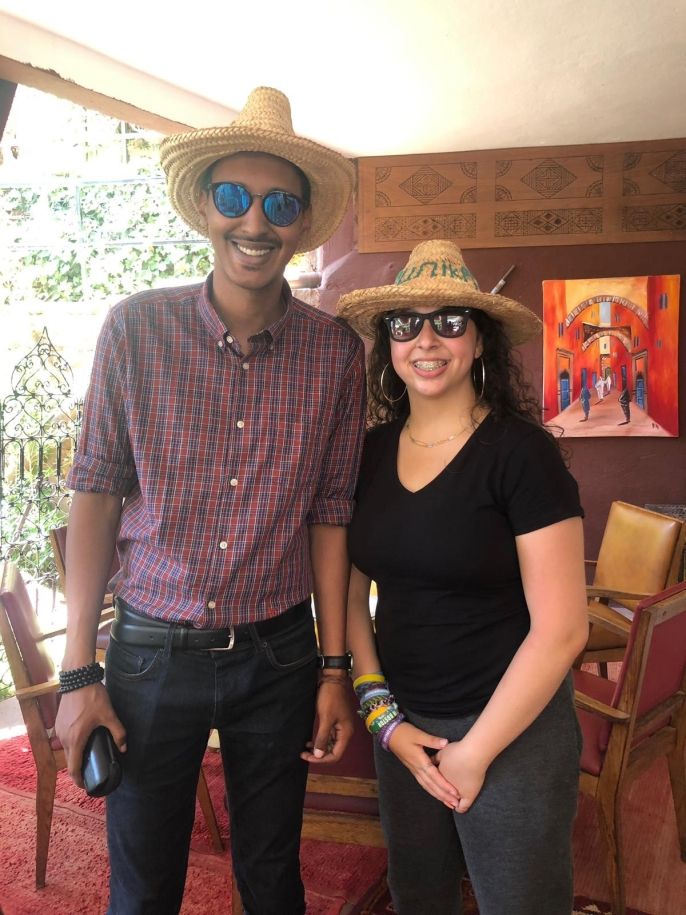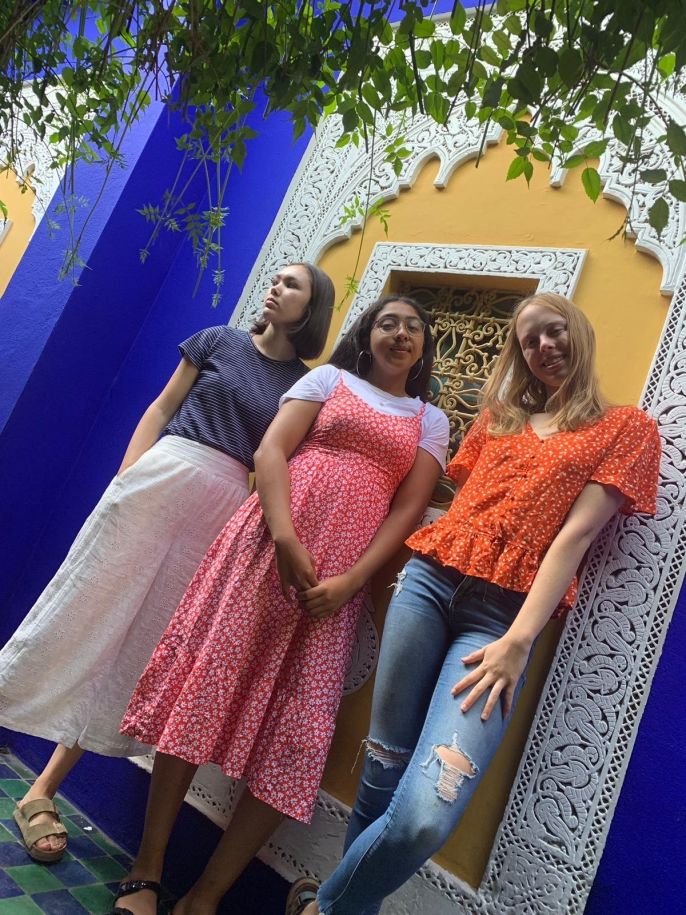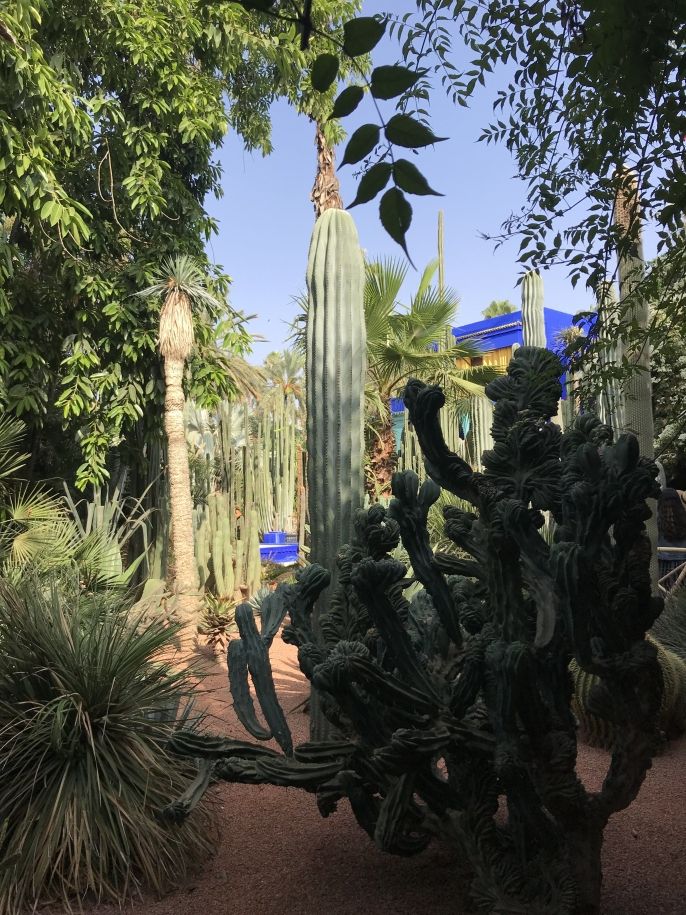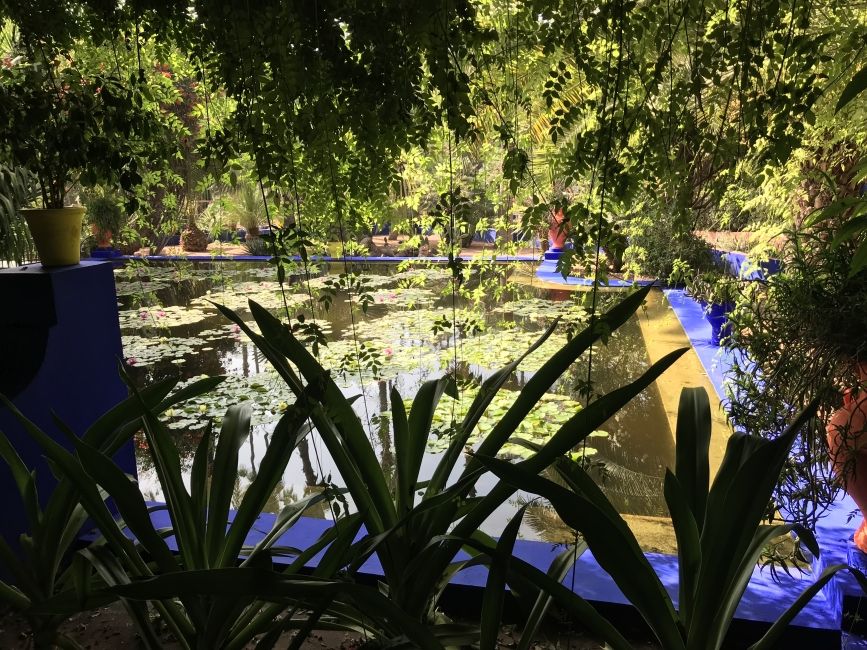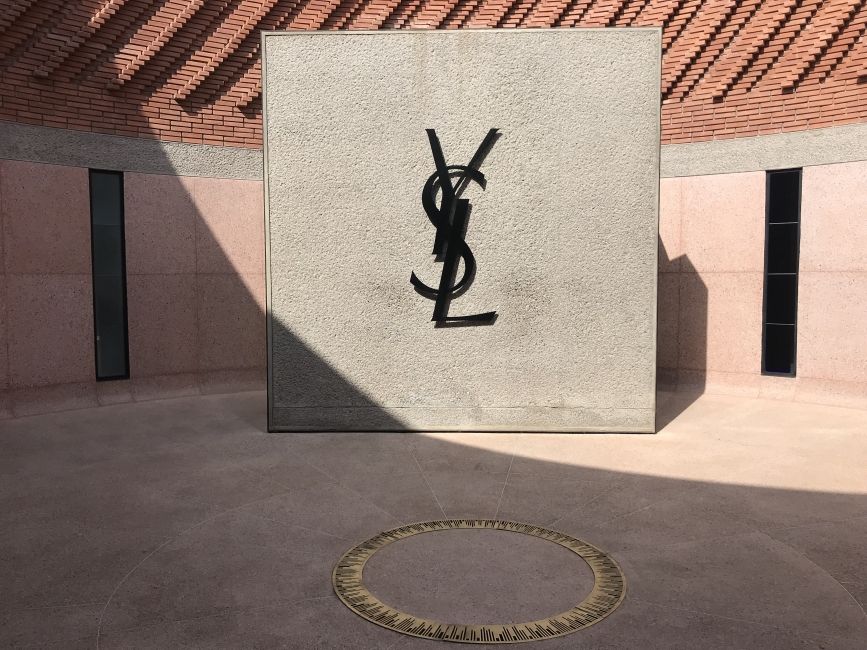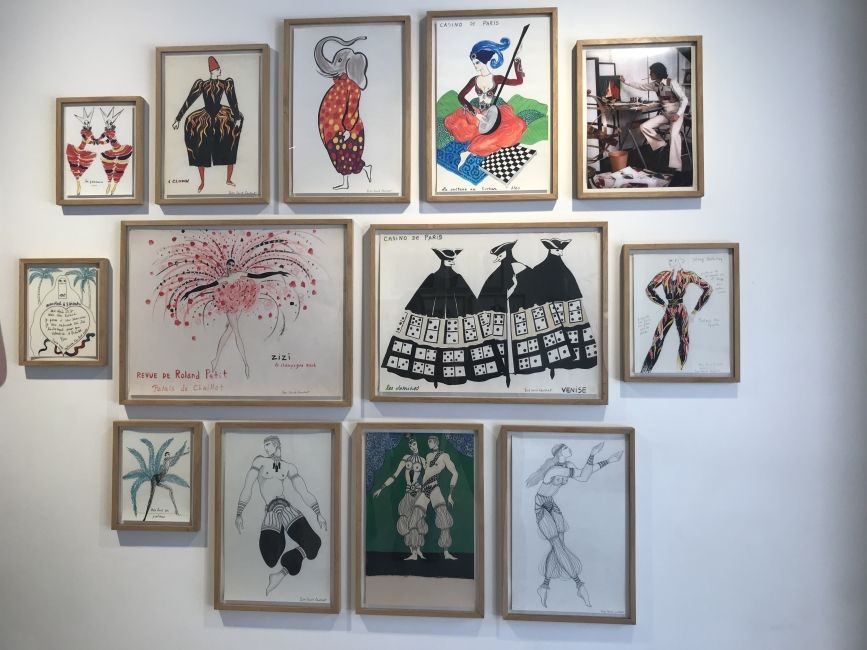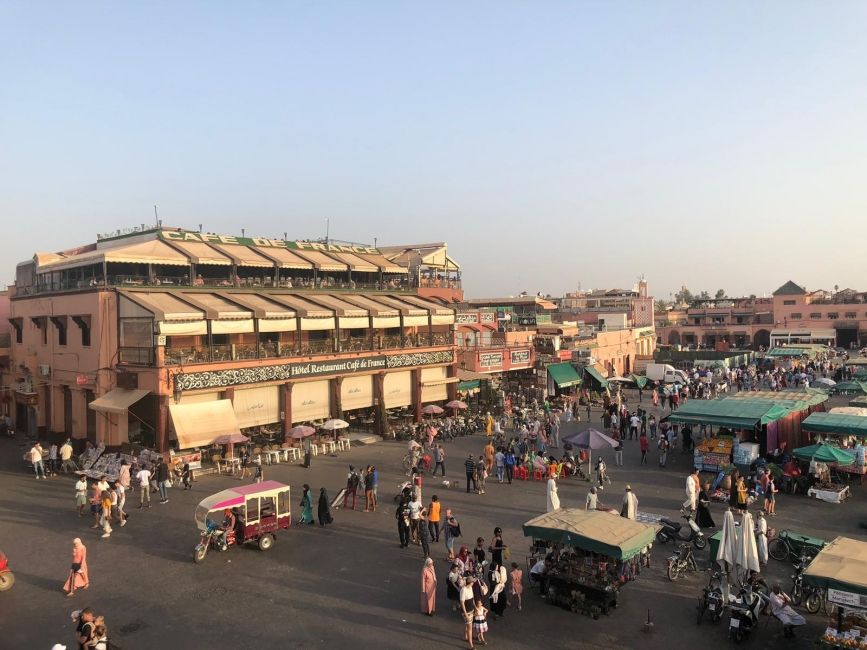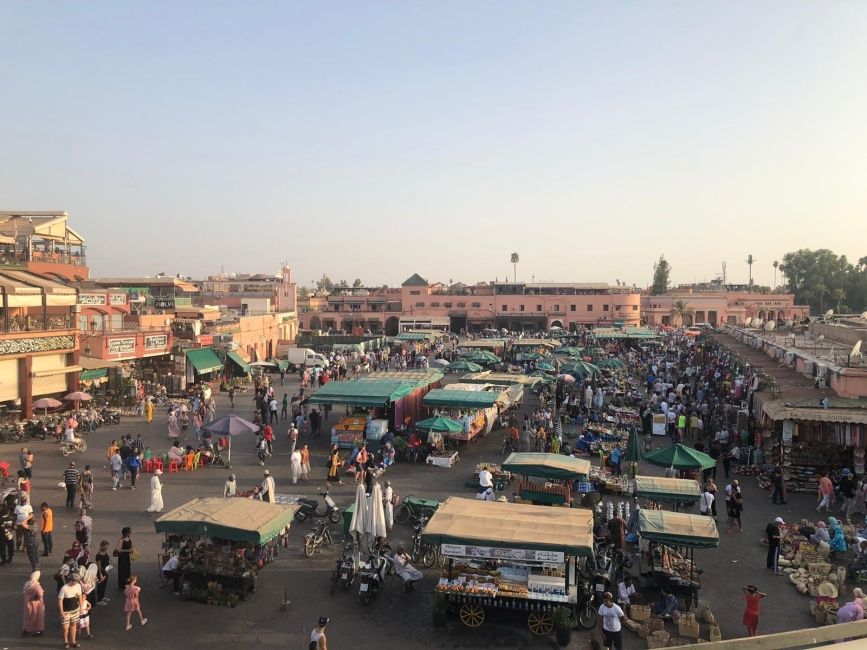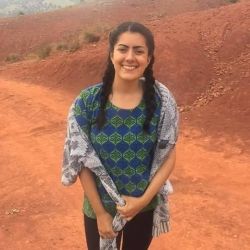Marrakech (مراكش), weekend in the Red City
On Friday our session two students departed for their first overnight excursion, Marrakech. Marrakech is a city in the south of Morocco, also known as the “red city” because of its deep red sandy color (almost like the Sahara Desert itself). Marrakech is a 4 hour drive away from the Rabat study center.
Students spent their first night exploring the famous square, Jemma L Fna, the largest square in Africa. At the square students enjoyed a traditional Moroccan meal overlooking the square while admiring the sunset. After dinner the PLs took students on a tour of Jemma L Fna and the souk. At Jemma L Fna square you can see an array of street performances from snake charmers, story tellers, music acts and artists, but the square also holds a myriad of food stands. Marrakech is known for its endless markets, alleyways, sights, colors and smells. When you walk through the streets of Marrakech, it’s a sensory overload and no wonder it’s the most visited city in Morocco. Marrakech every year hosts 2 million tourists, making it one of the must-see cities in the world and our students had the pleasure of staying and experiencing it for themselves. After a long day, students were taken back to the hotel to rest for the next day.
On day two of Marrakech students departed the hotel for Ourika, an Amazigh village located an hour outside of the city, but before arriving to the village stopped at one of the only synagogues in Morocco and for camel rides.
The first stop on our way to Ourika was camel ridding. All the students sat down to have tea and dress in traditional Amazigh clothing before ridding camels. Students got to ride camels and take selfies while being surrounded by the Atlas Mountains (their first glimpse of the mountains).
We also made a stop at the only synagogue in Ourika valley which holds the remains of Rabbi Shlomo, who is considered a revered Jewish saint in Morocco. Morocco throughout its history has been welcoming of all religions and peoples, Jews were not the exception. Currently, there are very few Jews in Morocco but in the 1940s Morocco had the largest Jewish population in North Africa/Middle East, with 250,000 to 300,000 Jews. The synagogue is not only significant for holding the remains of Rabbi Shlomo but also for being the embodiment of Morocco’s acceptance of other religions, which is evident by how the synagogue’s architecture is influenced by the surrounding Amazigh community.
Students arrived to Ourika, an Amazigh village surrounded by the High Atlas Mountains. Visiting a traditional Amazigh village gave students the full Moroccan experience because they got to see all aspects of Moroccan society and the city vs village dynamic. In Ourika students had the opportunity to hike through the village and through the High Atlas Mountains where they could see a panoramic view of the valley and Ourika village. After the hike students sat down to have a traditional Moroccan lunch: an assortment of salads, lemon chicken tagine (with endless bread), and dessert/Moroccan mint tea. Afterwards, students had the chance to explore the area and take in the gorgeous views. Later in the afternoon students departed back to Marrakech and had the rest of the day to explore Marrakech.
On their last day in Marrakech students visited Majorelle gardens and the Yves Saint-Laurent (YSL) Museum. The gardens were created and designed by French artist Jacques Marjorele, but he property was purchased by the fashion designers, Yves Saint-Laurent and Pierre Bergé who worked to restore it. Today, the garden and villa complex is open to the public. For lunch students were taken to Gueliz, the more modern district of Marrakech for lunch before departure.
Next weekend students will be visiting Tangier!
PL Andi
Related Posts
Weekend in Marrakesh
Our Weekend in Marrakesh - This blog was written by one of our students - Nyx Lange Reflecting on our past weekend excursion to Marrakesh from our Moroccan base of... keep reading
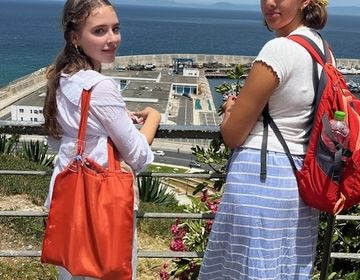
Exploring Tangier: A Day in Morocco's Gateway to Africa
This past weekend, our group ventured to the north of Morocco to the vibrant city of Tangier where the Mediterranean Sea meets the Atlantic Ocean First, we met our guide... keep reading
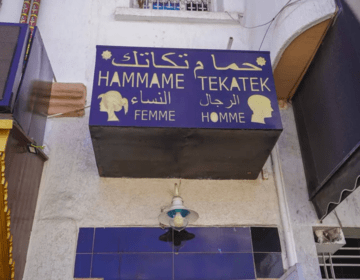
Bssaha wa Raha L'hammam🚰🪣🧼 بالصحة و الراحة الحمام
By Program Leader, Mohsin: Hey everyone! As your Moroccan program leader, I’m thrilled to introduce you to one of our country’s most cherished traditions: the hammam. If you’ve never heard... keep reading
